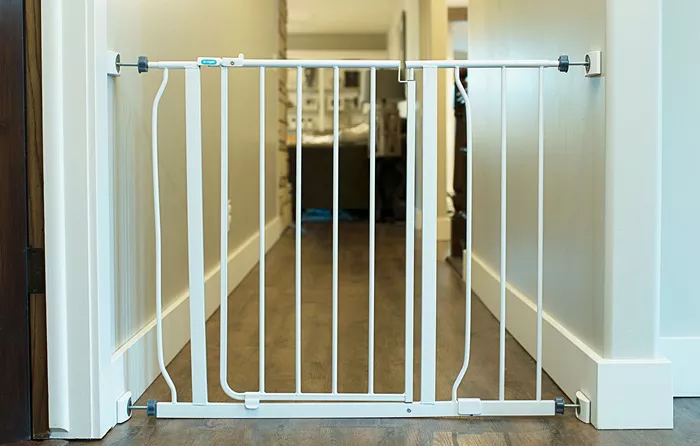A wall nanny is an innovative parenting tool designed to help manage the needs of infants and young children. It offers support to parents by providing a safe and organized environment for babies. This article explores the concept of a wall nanny, its functions, and the benefits it offers to families. Whether you’re a new parent or an experienced caregiver, understanding how a wall nanny works can make parenting tasks easier and more efficient.
Introduction to Wall Nannies
The term “wall nanny” refers to a device or system mounted on a wall in a baby’s room or a nursery. It is designed to assist with childcare tasks by keeping baby essentials organized and easily accessible. Wall nannies are particularly popular among parents who want to optimize space in their homes and create a more functional environment for their children.
What Does a Wall Nanny Do?
At its core, a wall nanny serves as a multifunctional organizer. It is typically mounted on a wall in the nursery, offering features such as shelves, compartments, hooks, and storage for various baby-related items. This could include diapers, wipes, clothes, toys, and other essential baby gear. The idea is to keep everything a parent needs within arm’s reach, ensuring that there is no need to rummage through drawers or cabinets when caring for a baby.
The Role of a Wall Nanny in Baby Care
Wall nannies are designed to make day-to-day tasks easier for parents. For instance, a parent can quickly grab a diaper or a fresh set of clothes without needing to move across the room. This functionality can be especially useful during late-night feedings or diaper changes when efficiency is crucial. By having everything in one place, parents can provide care to their baby in a more timely and stress-free manner.
Key Features of a Wall Nanny
Space-Saving Design: Wall nannies are typically designed to be mounted on the wall, which helps to save space in the nursery. This can be particularly useful in smaller rooms.
Organization: With compartments, hooks, and shelves, a wall nanny helps keep items neatly organized, so parents don’t have to deal with clutter.
Accessibility: Items are easy to access, reducing the time and effort required to care for a baby.
Safety Features: Some wall nannies include childproof locks or soft edges to ensure the safety of the baby.
The Benefits of Using a Wall Nanny
There are several benefits of using a wall nanny. These advantages can make life as a parent much more manageable:
Efficiency: The main advantage of a wall nanny is how it improves efficiency. Parents can save time by having baby essentials in one place, reducing the effort spent searching for items during caregiving routines.
Improved Organization: By having a dedicated space for baby items, a wall nanny helps parents stay organized. This is particularly helpful for parents of newborns, who may need to juggle many different items throughout the day.
Space Optimization: For parents living in apartments or smaller homes, space is often limited. A wall nanny takes advantage of vertical space, leaving the floor clear for other activities.
Safety: With items stored out of the way, parents can keep dangerous items, such as medications or cleaning supplies, safely out of the reach of children.
How to Choose the Right Wall Nanny
When selecting a wall nanny, it’s important to consider the following factors:
Size: Choose a wall nanny that fits the available space in the room. Ensure it provides enough storage without overcrowding the area.
Material: Wall nannies come in various materials, such as wood, metal, and plastic. Choose a material that matches the aesthetic of the room and can withstand daily use.
Storage Features: Look for a design that offers a variety of storage options, including shelves, baskets, and hooks. This will ensure that different baby essentials can be stored efficiently.
Safety: The wall nanny should be securely mounted to avoid accidents. Look for safety features like rounded edges and childproof locks.
Using a Wall Nanny for Different Stages of Child Development
A wall nanny can be useful at various stages of a child’s development. In the early stages, it can help parents manage infant supplies such as diapers, bottles, and wipes. As the child grows older, the wall nanny can be used to store toys, clothes, and other items that cater to a toddler’s needs.
Wall Nanny for Newborns
For newborns, a wall nanny helps keep the essentials close at hand. Diaper changes and feedings are frequent at this stage, so having items like diapers, wipes, bottles, and pacifiers within easy reach is crucial for the well-being of both the baby and the parents.
Wall Nanny for Toddlers
As children grow, their needs change. A wall nanny can be used to organize toys, clothes, and even snacks. This not only helps keep things tidy but also teaches toddlers the importance of organization and cleanliness from an early age.
Tips for Setting Up a Wall Nanny
Here are a few tips for setting up a wall nanny:
Prioritize Accessibility: Place the most frequently used items, such as diapers or wipes, at a lower height for easy access.
Use Labels: Label each compartment or shelf to help you quickly identify where items are stored. This is especially useful when multiple caregivers are involved.
Rotate Items Regularly: As your child grows, their needs will change. Regularly assess what is stored in the wall nanny and rotate out items that are no longer needed.
Conclusion
In conclusion, a wall nanny is a useful tool for parents looking to stay organized and efficient while caring for their children. By offering a safe and space-saving solution, a wall nanny helps ensure that parents have everything they need at their fingertips. Whether you are a new parent or an experienced caregiver, incorporating a wall nanny into your childcare routine can make daily tasks easier and less stressful. So, consider investing in a wall nanny to make your parenting journey more organized and streamlined.
Related topics:


